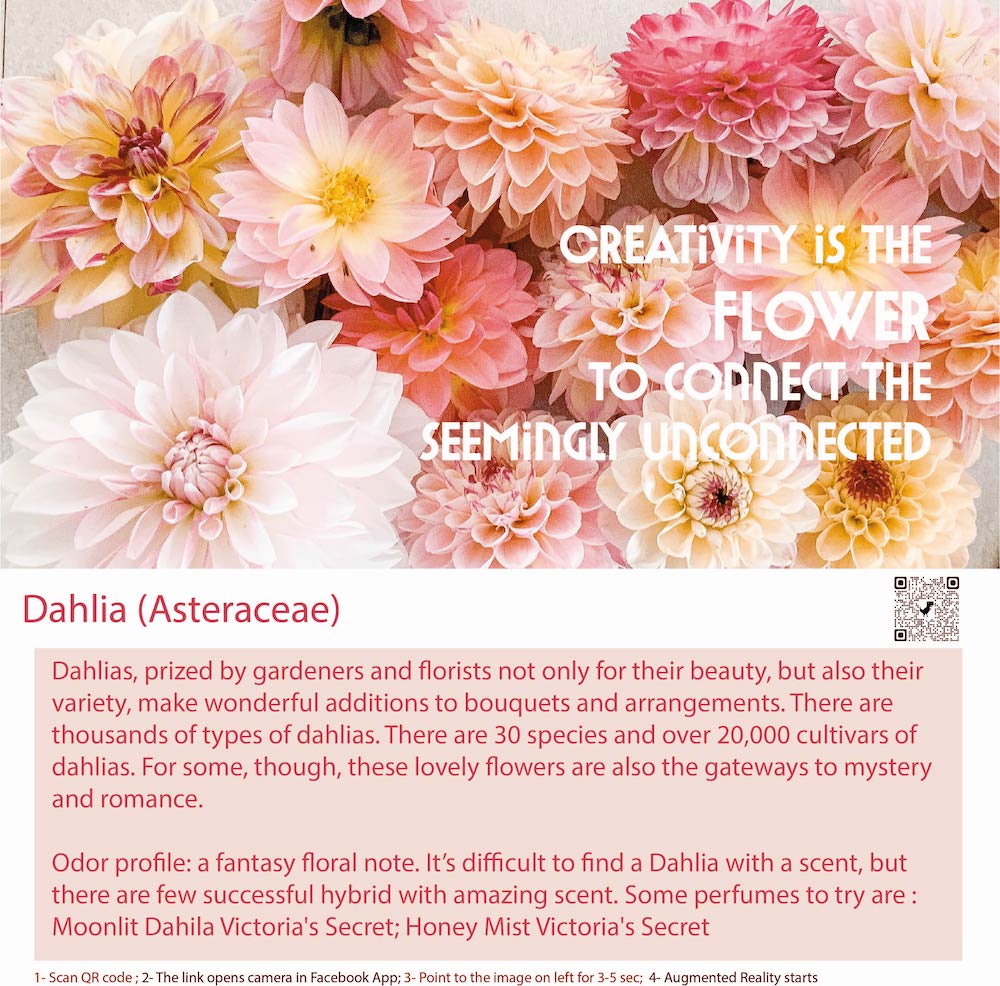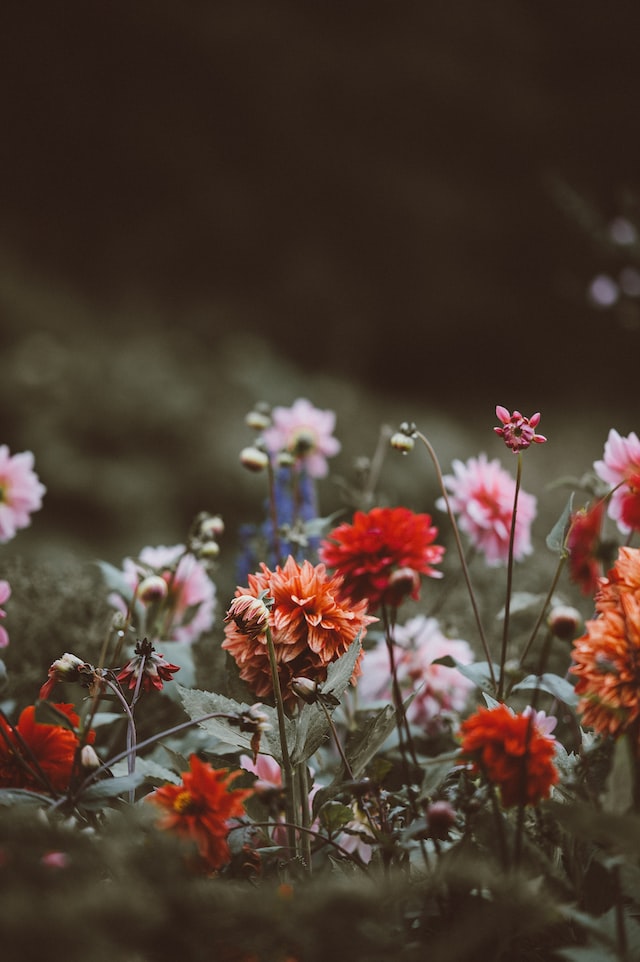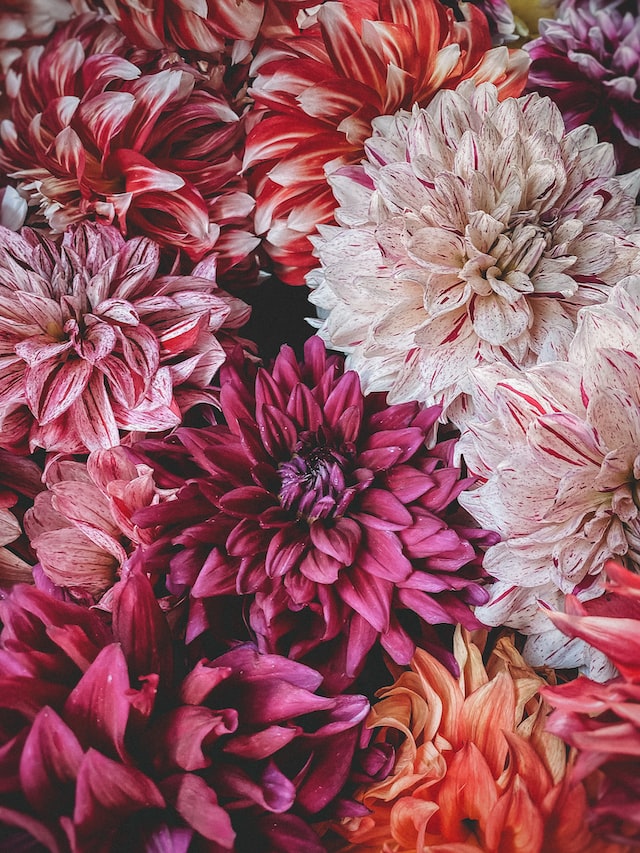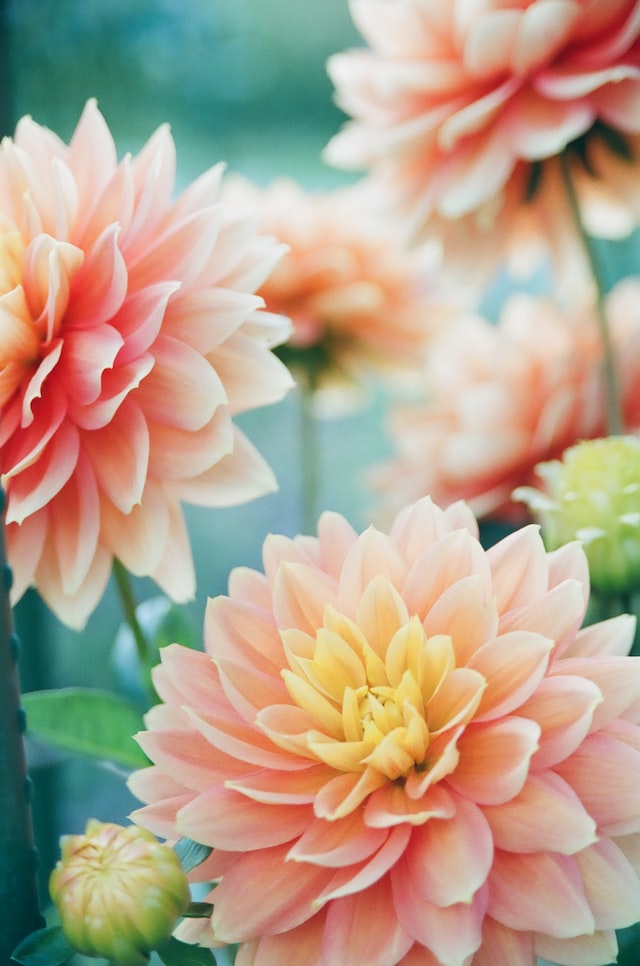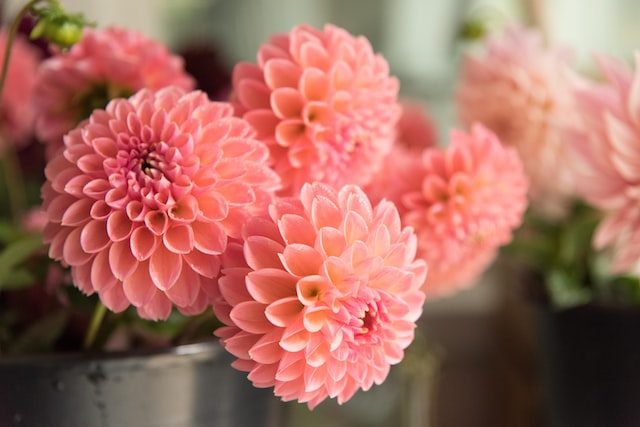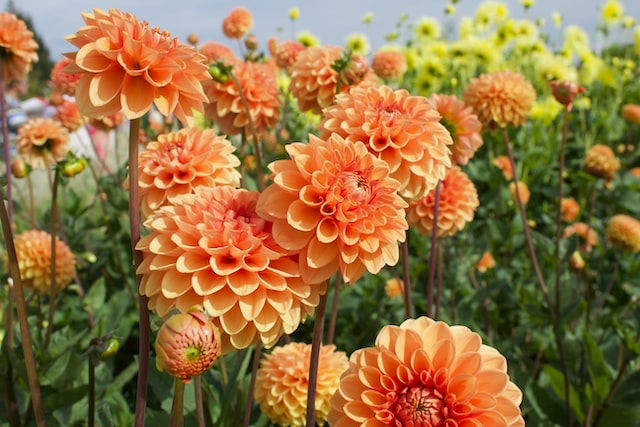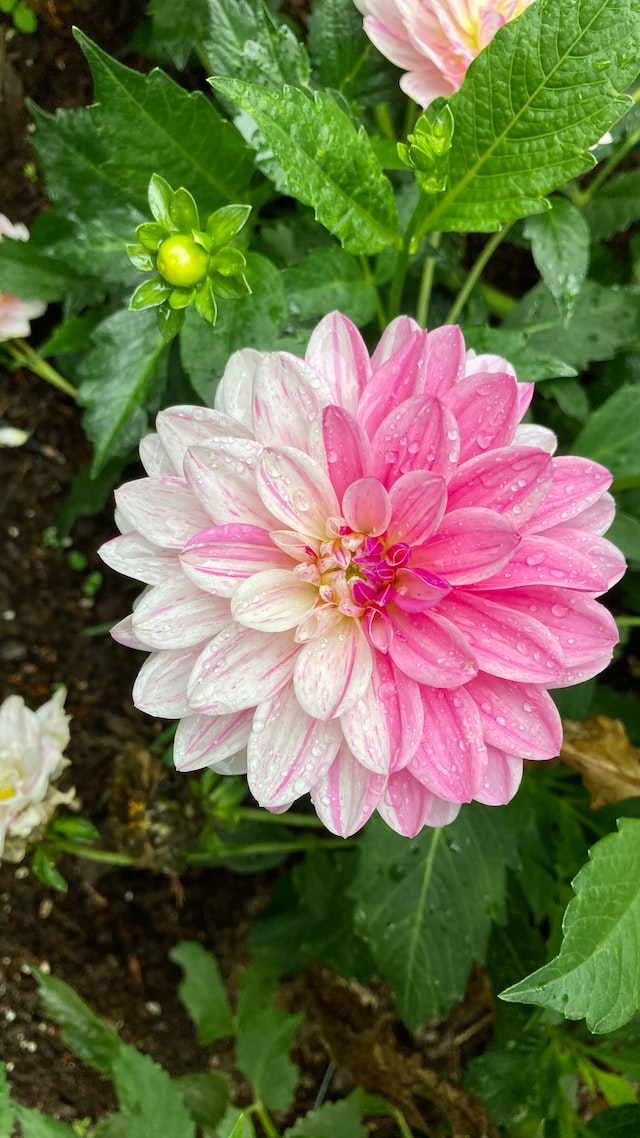Experience the Floral Charm: Sweet Dahlia Perfume
Dahlia: A Floral Symphony of Beauty and Fragrance
The dahlia, an enchanting flower with a kaleidoscope of colors and an irresistible fragrance, has captivated hearts around the world for centuries. From its role in perfumes and therapeutic oils to its culinary and medicinal applications, the dahlia has etched its place in the tapestry of human history. In this comprehensive article, we explore the many facets of the dahlia, from its delightful fragrance to its significance in various cultures and its surprising fun facts.
Dahlia in Perfumes: An Aromatic Symphony
The dahlia's sweet and enchanting fragrance makes it a prized addition to the world of perfumes. Perfumers often use the essence of dahlia to create alluring and captivating scents. Its aromatic profile is often described as floral, with subtle hints of spice and earthiness, making it a versatile and harmonious note in perfumery.
Dahlia in Therapeutic Oils: A Natural Remedy
Dahlia essential oil, extracted through a meticulous process of steam distillation, offers a range of therapeutic benefits. Its soothing and calming properties make it a popular choice in aromatherapy to reduce stress, anxiety, and promote relaxation. The gentle and comforting aroma of dahlia oil helps to create a serene and tranquil atmosphere.
Dahlia in Culinary Delights: A Delightful Twist
While not commonly used in mainstream cuisine, certain cultures have embraced the use of dahlia petals as a culinary ingredient. The vibrant and edible petals of the dahlia add a pop of color and a mild floral flavor to salads, desserts, and beverages. In Mexican cuisine, dahlia petals are occasionally used as a garnish or an ingredient in traditional dishes.
Dahlia in Traditional Medicine: A Symbol of Resilience
Throughout history, the dahlia has symbolized various virtues in different cultures. In the language of flowers, dahlia signifies inner strength, resilience, and elegance. In traditional medicine systems, the dahlia is believed to possess certain healing properties, although it is not commonly used as a medicinal herb.
Historical Significance of Dahlia: A Flower of Many Names
The dahlia holds a rich historical significance, tracing its roots to the Aztecs of ancient Mexico. They called the flower "cocoxochitl," which meant "water tube," due to its tuberous root system. When the Spanish conquistadors arrived in Mexico, they were enamored by the flower's beauty and uniqueness and brought it back to Europe. In honor of the renowned botanist Anders Dahl, who classified many plants, the flower was later named "dahlia."
Fun Crazy Facts about Dahlia
The dahlia, with its exquisite beauty, alluring fragrance, and versatile applications, continues to charm and inspire people worldwide. From perfumes that evoke emotions to therapeutic oils that calm the soul, from the occasional culinary delight to its cultural significance, the dahlia leaves an indelible mark on the canvas of human experiences. Its diverse range of colors, sizes, and symbolic meanings reflect the splendor of nature and the depth of human emotions. So, the next time you encounter the captivating dahlia, take a moment to appreciate its role in perfumery, therapeutic oils, culinary creations, and its historical and cultural significance that spans across continents and centuries.
The dahlia, an enchanting flower with a kaleidoscope of colors and an irresistible fragrance, has captivated hearts around the world for centuries. From its role in perfumes and therapeutic oils to its culinary and medicinal applications, the dahlia has etched its place in the tapestry of human history. In this comprehensive article, we explore the many facets of the dahlia, from its delightful fragrance to its significance in various cultures and its surprising fun facts.
Dahlia in Perfumes: An Aromatic Symphony
The dahlia's sweet and enchanting fragrance makes it a prized addition to the world of perfumes. Perfumers often use the essence of dahlia to create alluring and captivating scents. Its aromatic profile is often described as floral, with subtle hints of spice and earthiness, making it a versatile and harmonious note in perfumery.
Dahlia in Therapeutic Oils: A Natural Remedy
Dahlia essential oil, extracted through a meticulous process of steam distillation, offers a range of therapeutic benefits. Its soothing and calming properties make it a popular choice in aromatherapy to reduce stress, anxiety, and promote relaxation. The gentle and comforting aroma of dahlia oil helps to create a serene and tranquil atmosphere.
Dahlia in Culinary Delights: A Delightful Twist
While not commonly used in mainstream cuisine, certain cultures have embraced the use of dahlia petals as a culinary ingredient. The vibrant and edible petals of the dahlia add a pop of color and a mild floral flavor to salads, desserts, and beverages. In Mexican cuisine, dahlia petals are occasionally used as a garnish or an ingredient in traditional dishes.
Dahlia in Traditional Medicine: A Symbol of Resilience
Throughout history, the dahlia has symbolized various virtues in different cultures. In the language of flowers, dahlia signifies inner strength, resilience, and elegance. In traditional medicine systems, the dahlia is believed to possess certain healing properties, although it is not commonly used as a medicinal herb.
Historical Significance of Dahlia: A Flower of Many Names
The dahlia holds a rich historical significance, tracing its roots to the Aztecs of ancient Mexico. They called the flower "cocoxochitl," which meant "water tube," due to its tuberous root system. When the Spanish conquistadors arrived in Mexico, they were enamored by the flower's beauty and uniqueness and brought it back to Europe. In honor of the renowned botanist Anders Dahl, who classified many plants, the flower was later named "dahlia."
Fun Crazy Facts about Dahlia
- Dahlia flowers come in a wide range of colors and sizes, with some varieties growing as large as dinner plates.
- The dahlia is the national flower of Mexico, symbolizing national pride and resilience.
- In the Victorian era, the language of flowers, also known as floriography, was a popular means of communication. The dahlia was associated with messages of dignity and elegance.
- The dahlia festival, celebrated in various parts of the world, showcases the diverse array of dahlia varieties and cultivars.
The dahlia, with its exquisite beauty, alluring fragrance, and versatile applications, continues to charm and inspire people worldwide. From perfumes that evoke emotions to therapeutic oils that calm the soul, from the occasional culinary delight to its cultural significance, the dahlia leaves an indelible mark on the canvas of human experiences. Its diverse range of colors, sizes, and symbolic meanings reflect the splendor of nature and the depth of human emotions. So, the next time you encounter the captivating dahlia, take a moment to appreciate its role in perfumery, therapeutic oils, culinary creations, and its historical and cultural significance that spans across continents and centuries.
To experience augmented reality, please open the Facebook-app using QR code and point to the image below
Elevate Your Scent Game with Sweet Dahlia Perfume
Dahlia is a genus of herbaceous perennial plants that are native to Mexico and Central America. They are known for their large, showy flowers that come in a wide range of colors, including red, pink, yellow, and purple. The flowers can be single or double, and they bloom in late summer and fall. Dahlias are popular garden plants and are often used as cut flowers. They require well-drained soil and full sun to grow well.
Crafting the Sweet Dahlia Fragrance: A Symphony of Floral Notes
The dahlia is a flower that has been revered in many cultures throughout history. In ancient Aztec culture, the dahlia was considered to be a symbol of nobility and good luck. In the Victorian language of flowers, the dahlia symbolized dignity and elegance. In Chinese culture, the dahlia is said to symbolize a long-lasting bond of friendship. The flower also has a presence in mythology, Aztec mythology believed that dahlia was a flower that came from the blood of an ancient god who was killed by the other gods.
In more recent history, the dahlia has been associated with the Mexican culture, and it is commonly used in Mexican folk art and traditional festivals. The flower is also the national flower of Mexico.
In more recent history, the dahlia has been associated with the Mexican culture, and it is commonly used in Mexican folk art and traditional festivals. The flower is also the national flower of Mexico.
Indulge in Irresistible Femininity with Sweet Dahlia Perfume
Dahlia essential oil is not commonly used in traditional medicine or aromatherapy. The oil is extracted from the petals of the dahlia flower and is believed to have some therapeutic properties. However, as it is not a widely used oil, there is limited scientific research to support its use for specific health benefits.
Some traditional uses of dahlia essential oil include:
Some traditional uses of dahlia essential oil include:
- Soothing skin irritation and reducing inflammation
- Acting as a natural pain reliever
- Helping to promote relaxation and reduce stress
- Having antimicrobial properties
Unlock Elegance: Discover the Sweet Dahlia Perfume
The Black Dahlia murder refers to the brutal and unsolved murder of Elizabeth Short in 1947. The case received widespread media attention and became one of the most famous unsolved murder cases in American history.
Short's body was found in a vacant lot in Los Angeles, California on January 15, 1947. She had been brutally killed and her body had been mutilated, leading to her nickname, "The Black Dahlia." The case received intense media coverage and generated numerous leads and suspects, but the killer was never identified or caught.
The case has inspired several books, movies and TV shows, and still today it is considered one of the most gruesome unsolved murder cases in American history.
Short's body was found in a vacant lot in Los Angeles, California on January 15, 1947. She had been brutally killed and her body had been mutilated, leading to her nickname, "The Black Dahlia." The case received intense media coverage and generated numerous leads and suspects, but the killer was never identified or caught.
The case has inspired several books, movies and TV shows, and still today it is considered one of the most gruesome unsolved murder cases in American history.
Explore Our Range of Dahlia-Inspired Fragrances
The history of dahlia trading can be traced back to the 18th century, when the flower was first introduced to Europe from Mexico. The dahlia quickly became popular among European horticulturists and botanists, who began to develop new varieties of the flower through selective breeding. In the 19th century, dahlias became widely popular among gardeners and flower growers, and they were widely cultivated and traded throughout Europe and North America.
In the late 19th and early 20th centuries, dahlias became a major commercial crop in Europe and North America. They were exported to other parts of the world, and dahlia cultivation became a significant industry in many countries. In the United States, the American Dahlia Society was founded in 1891, to promote the cultivation and breeding of dahlias.
Today, dahlias are still widely grown and traded around the world. They are popular for their vibrant colors and unique flower forms, and are commonly used in cut flower arrangements and as garden plants. Dahlia bulbs are also traded internationally, with some of the most popular varieties being grown in the Netherlands, Colombia, and Ecuador.
In the late 19th and early 20th centuries, dahlias became a major commercial crop in Europe and North America. They were exported to other parts of the world, and dahlia cultivation became a significant industry in many countries. In the United States, the American Dahlia Society was founded in 1891, to promote the cultivation and breeding of dahlias.
Today, dahlias are still widely grown and traded around the world. They are popular for their vibrant colors and unique flower forms, and are commonly used in cut flower arrangements and as garden plants. Dahlia bulbs are also traded internationally, with some of the most popular varieties being grown in the Netherlands, Colombia, and Ecuador.
The Scentopia Singapore Experience: Captivating Women's Fragrance
Dahlia is not a commonly used ingredient in perfumery. Some perfumes have been created using the essential oil of the dahlia flower, but it is a relatively rare ingredient. The essential oil is usually used as a minor component, blended with other essential oils or synthetic ingredients to create a unique fragrance.
Dahlia's scent is described as light, floral and fresh. It is used in perfumery to bring a floral touch to the fragrance, to add a bit of sweetness and to create a romantic feeling. The scent of dahlia is not as strong as other flowers like Rose, Jasmine or Lavender, so it is not used in large quantities in perfumes.
It's worth noting that many perfumes use synthetic ingredients that mimic the scent of dahlia, rather than the actual essential oil of the flower. Additionally, many perfumes use the name of dahlia in their branding, but do not actually contain any dahlia-derived ingredients.
Dahlia's scent is described as light, floral and fresh. It is used in perfumery to bring a floral touch to the fragrance, to add a bit of sweetness and to create a romantic feeling. The scent of dahlia is not as strong as other flowers like Rose, Jasmine or Lavender, so it is not used in large quantities in perfumes.
It's worth noting that many perfumes use synthetic ingredients that mimic the scent of dahlia, rather than the actual essential oil of the flower. Additionally, many perfumes use the name of dahlia in their branding, but do not actually contain any dahlia-derived ingredients.
Join Scentopia, Sentosa's latest tourist attraction wonderful orchid scent crafting, fragrance tour, bridal shower or corporate team building which includes perfume making onsite and offsite, beach activities and more. We also serve primary school learning journey, secondary students and pupil on industrial excursions. Know more about our orchids perfume bar or therapeutic orchid scents and other wellness aromas. Conatct Perfume workshop or book a scent crafting session here.

